7 Handy Tip for Winterizing Trees [Bonsai]
Have you winterized your trees yet?
Today we are getting the first signs of freezing rain. You can see it collecting on top of the soil, like a white powder. It was very slippery to walk on even rough surfaces. My post today will be all about how to protect your potted trees from weather like this.
Small potted trees need to be protected in the winter time. When the roots freeze, the tree cannot feed itself, and it dies. Wind can also damage trees causing limbs to break. An open wound on a tree is an invitation for frost and cold damage to seep into the center of the tree and cause rot. Bugs and borers might even crawl inside and lay eggs. Soft rotting wood if a favorite holiday delicacy for bugs.
There are several ways to protect trees in the winter. In this post I am going to show you how I protect mine.
- Move the trees up close to the house. The house will act as a wind barrier on one side, and it will reflect some sunlight and warmth onto the trees in the daytime to help melt any ice that forms. The eaves of the house will also help prevent some of the rain and snow from falling onto the trees.
- Cover with a heavy layer of mulch. Most bonsai growers recommend using wood chips or barkdust. I like to use coconut fiber because it is cheap, and I can use it again in the spring as a soft medium growing vegetables in. Whatever kind of mulch you choose, it should be able to absorb water, but not so much that it becomes mucky or muddy, as this may cause your trees to rot. Rock mulches are also insufficient as they will not retain enough water to feed the plants during the many dry weeks that happen in winter (although rock mulch might be good if your winter has a monsoon climate!). Leaves are not ideal as they may dry out or blow away, and you need a mulch that stays put, and stays slightly moist.
Even if you grow tree cuttings in a basin like I do, you can cover the rocky, sandy soil with soft mulch, and in the spring they should be bursting with life on the first warm day. Cuttings tend to grow roots in all directions. So if the basin pools with too much water, it will know to grow roots up closer to the surface where there is some air, and eventually that bottom water should absorb and evaporate out into the soft mulch on top.
- Another option is to plant your trees inside their pots directly into a hole you dig in the ground. The earth is usually very good at handling the drainage of water, and re-dispersing water as needed throughout the soil. It also provides the best protection against wind damage for tree roots, as the temperature will be much warmer than freezing just a few inches below the surface. Be careful if you choose to plant your trees in the soil, because trees tend to put out new fat roots in the winter, and it might not be easy to dig your tree back out in the spring. If your tree develops a long taproot, it might continue to grow there even if you prune it off. Sometime pruning off a large taproot might kill the tree it was attached to. I would recommend burying your potted tree over a shallow dish to discourage roots from heading down into the soil, and surround the dish with lots of mulch to sponge out any rain water that might pool and drown the tree.
Young lemon trees, indoors for winter
- If you grow a tropical tree such as a palm tree or a citrus tree, then you can't leave it outside in the winter at all, and expect it to survive. These types of trees live in parts of the world that never have below zero temperatures, and are not adapted for extreme weather. Any type of tropical tree should be brought inside the house, or at least put into a garage, before the first day of frost is expected. Keep them inside all of the winter months until there is no longer any danger of frost for the rest of the year. Some people grow these types of trees inside all year long, but they will not grow to their full potential unless you give them full sun during the growing season.
- Protect the trunk of any tree that could suffer damage from hungry wildlife. Learn about your tree to find out what kind of animals in a habitat it supports. It might be a favorite tree for deer, rabbits, or goats. Sometimes the cats in the neighborhood wander around at night look for certain types of trees to use as their favorite scratching post. I grow an apple tree, which has soft wood, and very little bark on it, and so I chose to protect my it with a foam barrier. Many people prefer to wrap their trunks with chicken wire or wire fencing, and keep it space out so it isn't directly against the wood. Remember, living wood expands it absorbs water and grows, so make sure you are not wrapping it tightly with anything. If you wire your bonsai trees, please be sure to remove those wires before winter, as the trunk will definitely expand each year during this season.
- Don't neglect your trees. Observe how they are doing every week. If one of them fell over, prop it back up, and protect its roots and soil base. Pluck out any dying leaves that might be rotting and collecting mold and disease. Give them some clean water to make sure the soil stays wet. Most trees don't need fertilizer in the winter, as the rain will offer many trace nutrients. Don't water them if the soil is already moist, and you think it is going to freeze, as you might turn your trees into a single block of ice! You can put a cloth blanket or tarp over the soil, or even over the entire tree if you are concerned about snow and ice. Some people even cut out little plastic aprons to cover the tree soil from rain and frost, and leave the tree exposed so it can continue to receive sunlight. The trees will always do better at absorbing warm water from beneath the roots, than have to deal with the frozen water forming a barrier on top.
Apple tree with frost on leaves.
- If you haven't already winterized your trees, better to do it now than never. Even if you leave them out unprotected all the way into March, the trees could still die if all their roots have frozen and died faster than it can regrow roots. Some people living in rented homes or apartments might not be allowed to make a big mulch pile, and if you are short on space, you could just put your trees in a cardboard box near the side of your house, and that should insulate them much better than normal. Wrap an old cotton blanket, towel, or newspaper around the trees for added protection.
Bonus Photos:
Got a visitor today. The hooded bluejay doesn't come by very often.
I think the birds knew it was going to snow. They have been feasting all morning this Christmas Eve.
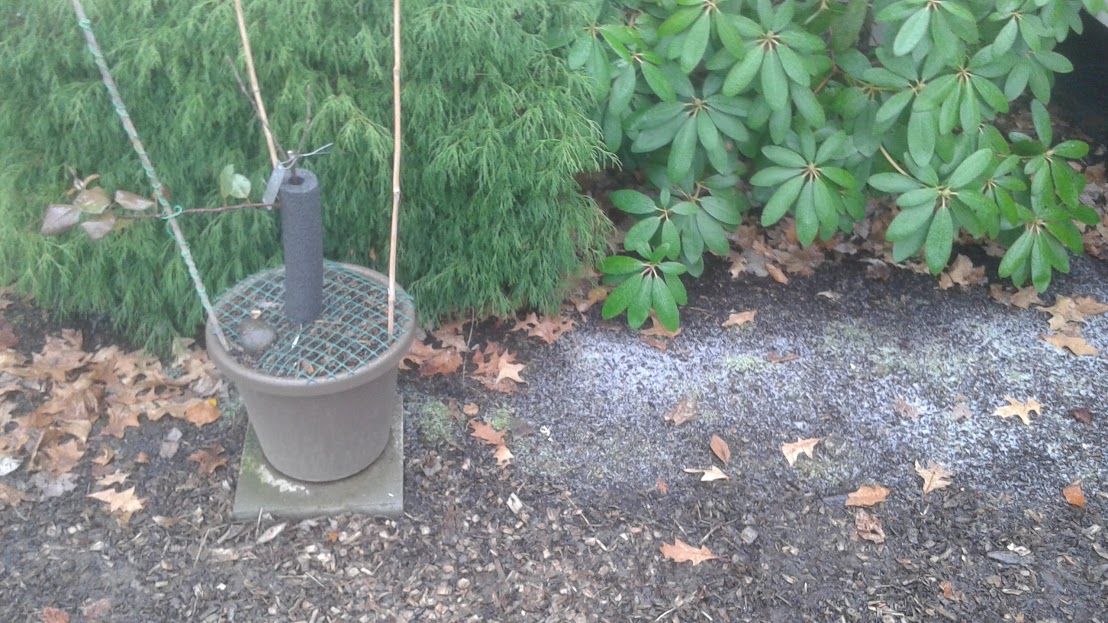
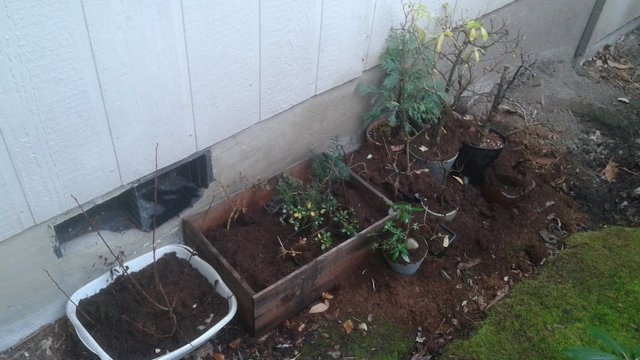
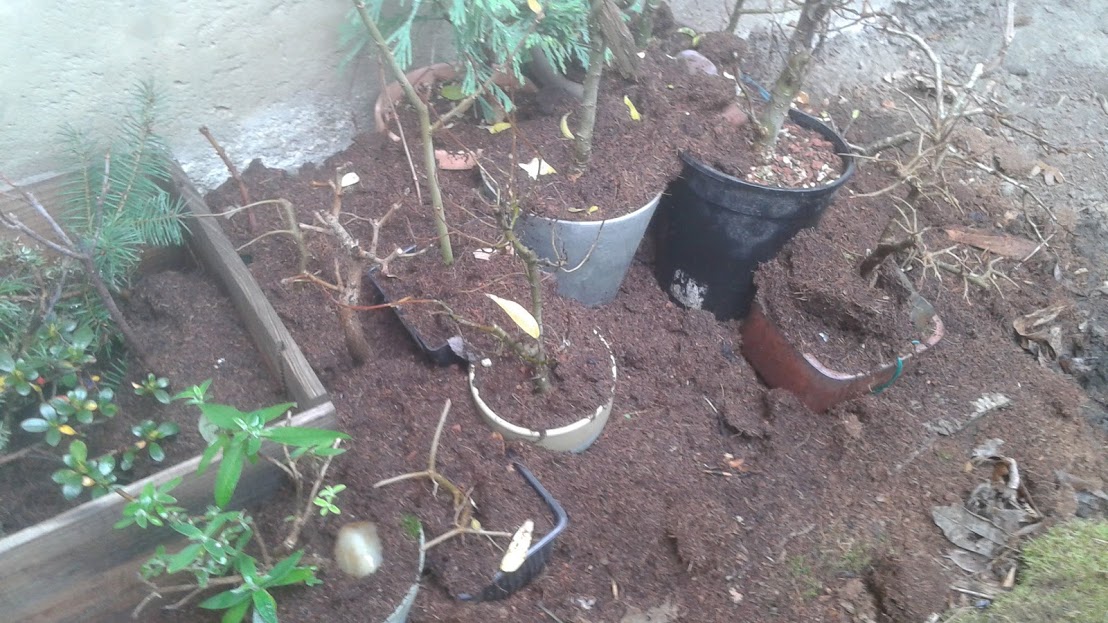
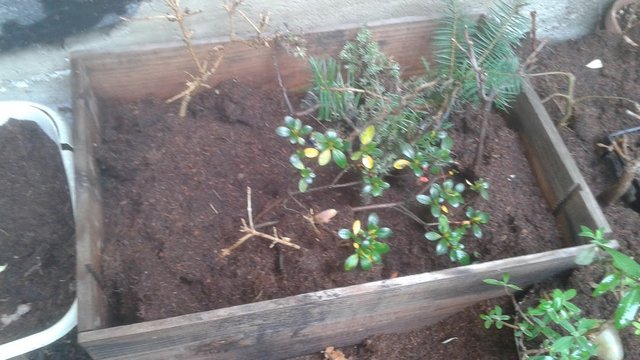
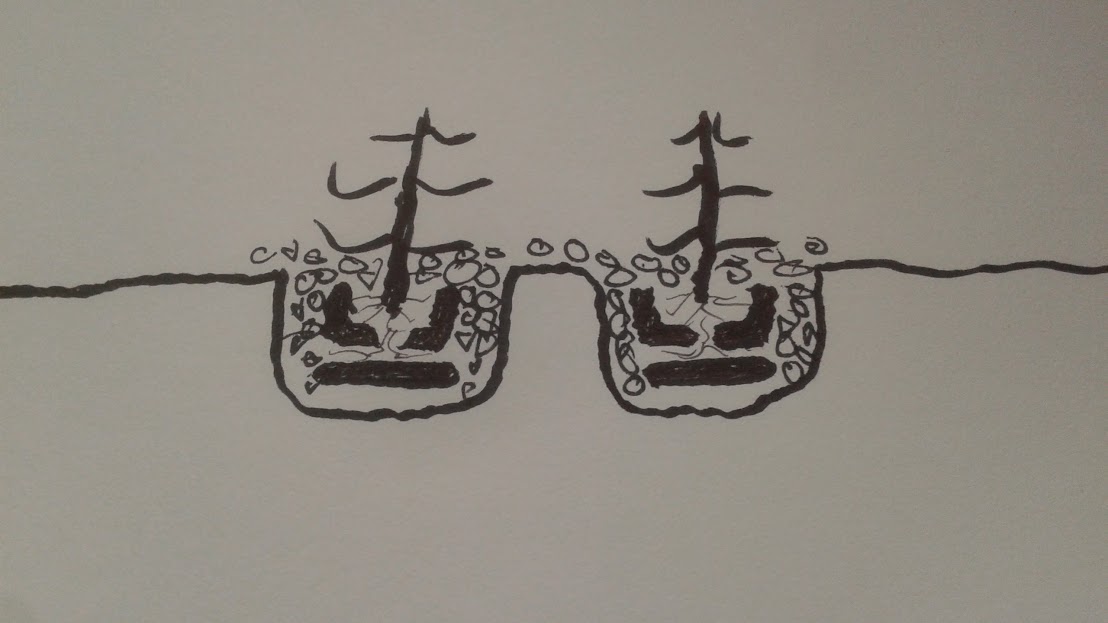
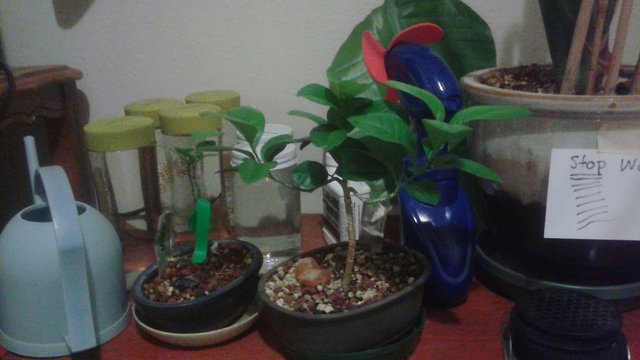
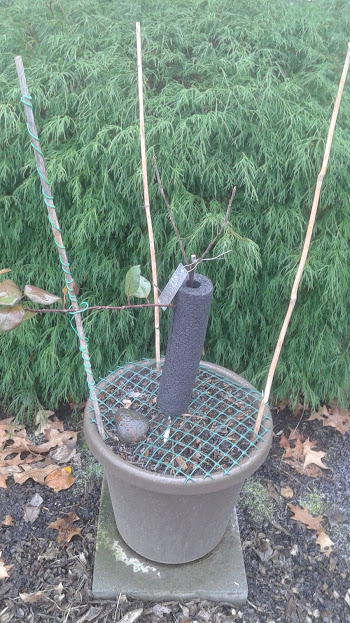
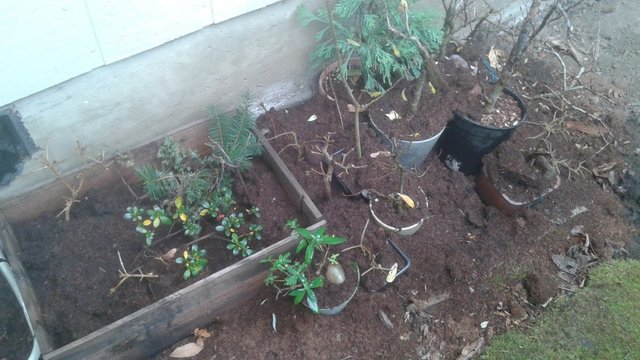
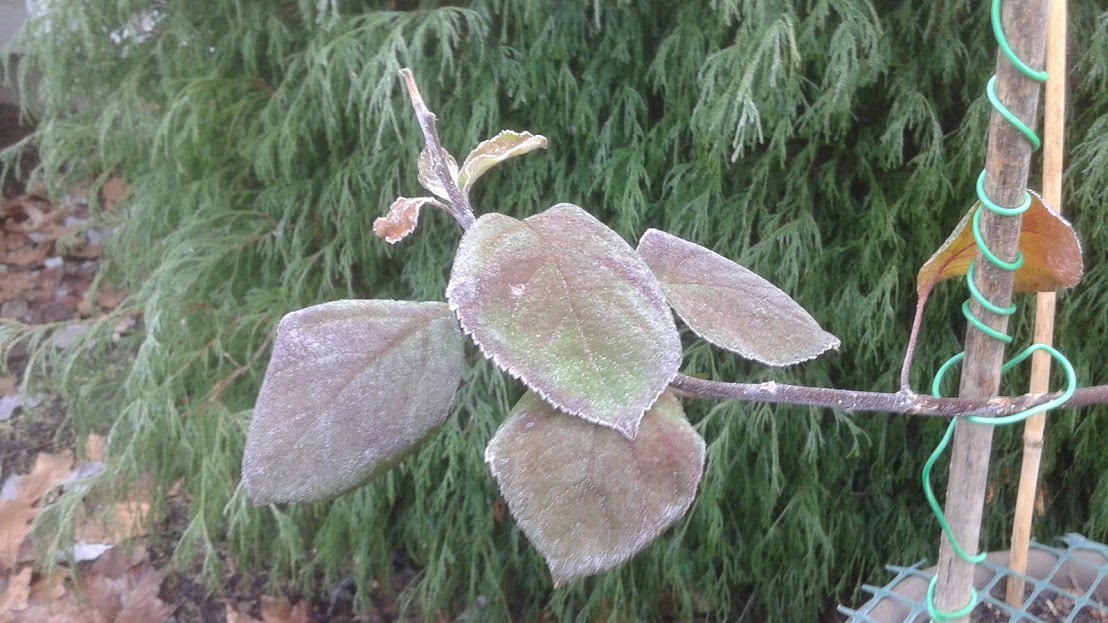
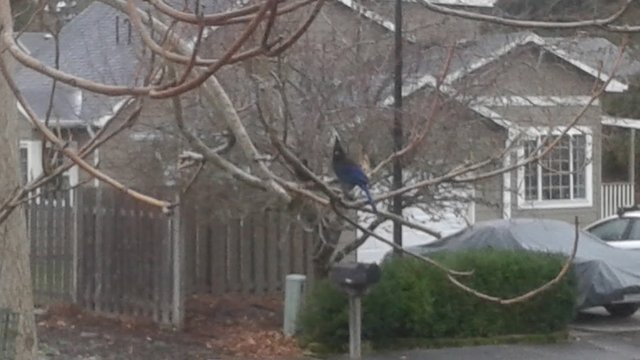
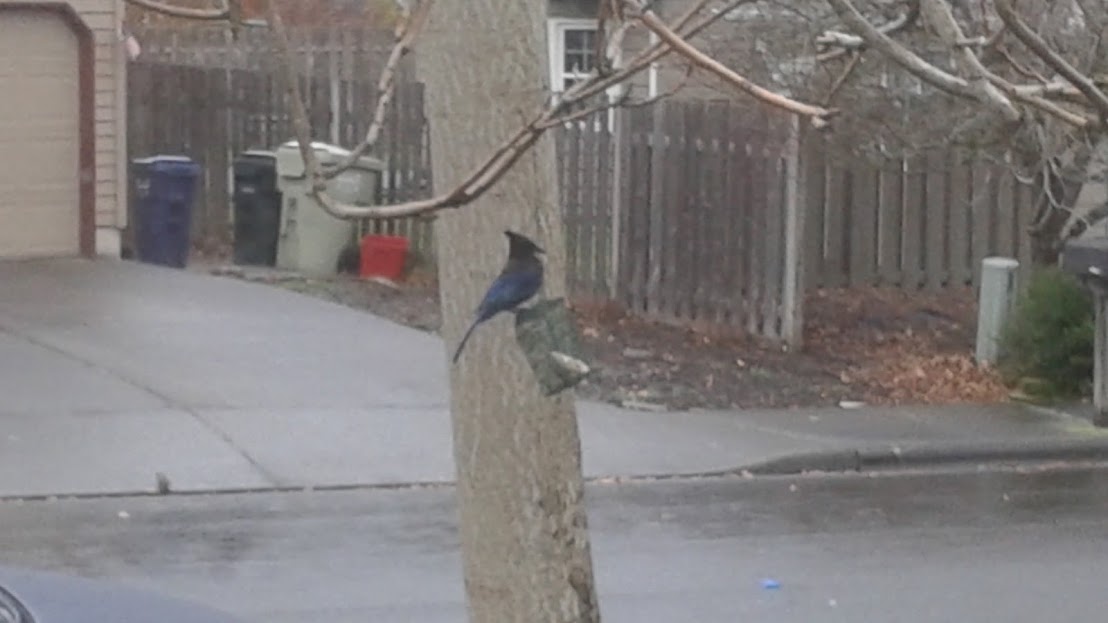
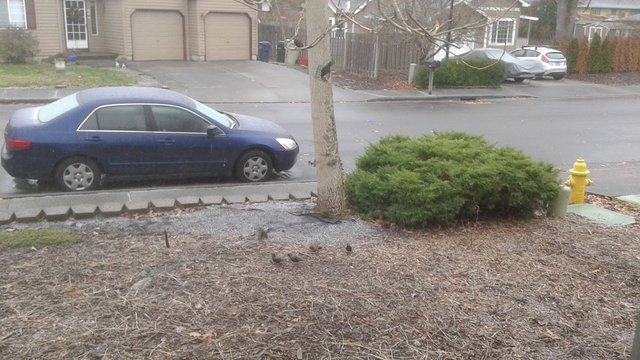
very Useful post. i think this post help who like to grow their bonsai. thanks a lot.